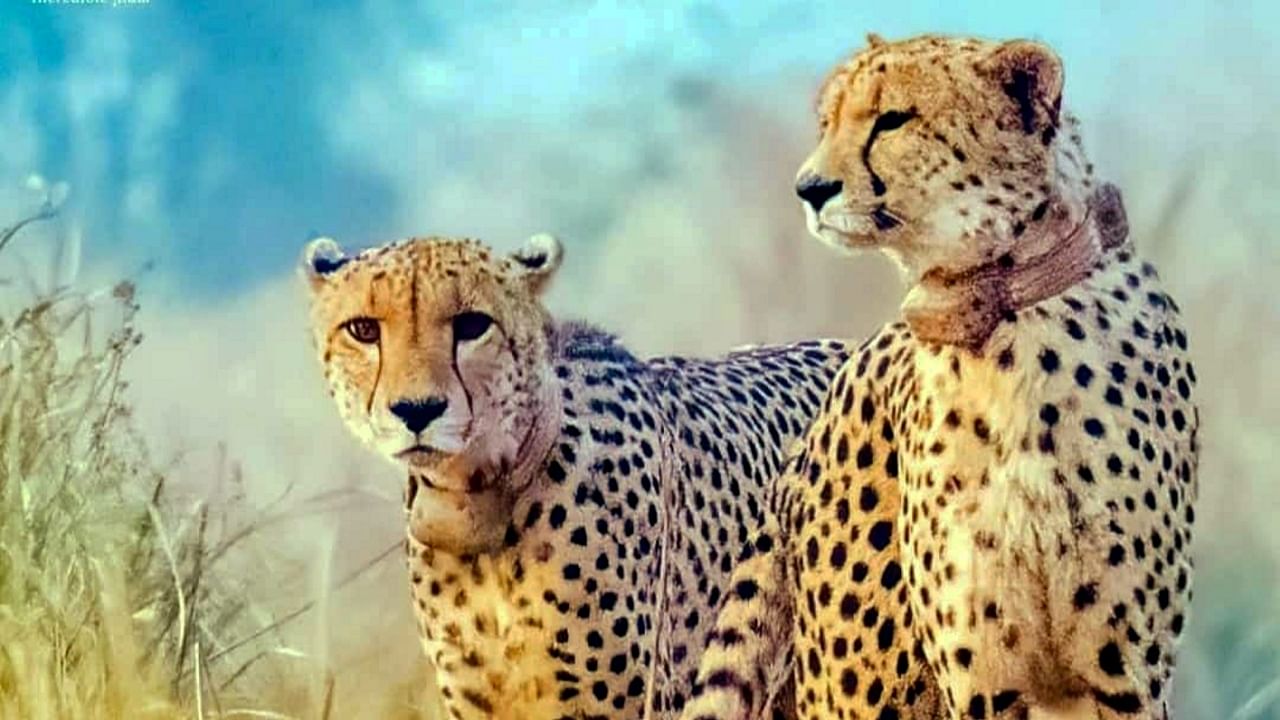
Indian authorities on Sunday described all cheetah deaths at Kuno national park as “natural ones” without specifying the reasons for any of them while observing that experts’ opinions linking the last two feline deaths with radio-collared related infections were “speculation and hearsay”.
“Of the 20 translocated cheetahs from South Africa and Namibia, five mortalities have been reported till date. All mortalities are due to natural causes. There are reports in the media attributing these cheetah deaths to other reasons including their radio collars. Such reports are not based on any scientific evidence but are speculation and hearsay,” the Union Environment Ministry said in a statement.
The ministry said a preliminary analysis by the National Tiger Conservation Authority puts “natural causes” as the reason, but it didn’t elaborate on what were the causes.
The government response comes a day after South African and Indian experts advising the ministry on the cheetah programme attributed bacterial infections associated with wet radio collars as the reason for the last two adult cheetah deaths within 72 hours.
“It's quite strange they are talking about natural causes. Applying collars on animals is not natural. The cheetahs didn’t wander to India from Africa naturally. It's stupid to define things as natural versus unnatural,” Adrian Tordiffe, a veterinary wildlife specialist at the University of Pretoria, and one of the advisers to the Indian cheetah project told DH.
Tordiffe and other experts said the cause of death was a disease known as “myiasis”, triggered by skin inflammation under the radio collars as that patch remained wet due to monsoon rain. The affected skin attracted flies that lay eggs and produced maggots, which fed on dead or infectious tissues. With flies and larvae invading the wound, it spread to the back causing systemic infections leading to septicaemia or blood infection that turned fatal.
“The two cheetahs Tejas and Suraj died due to collar-related infections. It is a cause for concern because in my career I’ve never seen radio collars giving problems like this,” Rajesh Gopal, chairman of the Cheetah Project Steering Committee said in an interview. “It is a clear-cut case of abrasion, degenerating into sepsis," said Gopal, a former head of Project Tiger, who led the tiger translocation projects in Sariska and Panna.
“The (MoEF) statement appears to show everything is fine, while in reality, they aren’t. No expert anywhere in the world could have anticipated such a scenario. It was unavoidable. What is avoidable is to prevent any further deaths, because in such a case we will be responsible for not doing anything,” Tordiffe said.
The ministry on its part said the Project Cheetah was yet to complete a year and it would be premature to conclude the outcome in terms of success and failure since cheetah reintroduction was a long-term project. "There is optimism that the project will succeed in the long run and there is no reason to speculate at this juncture," it added.
